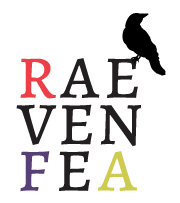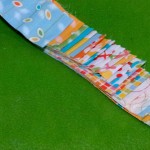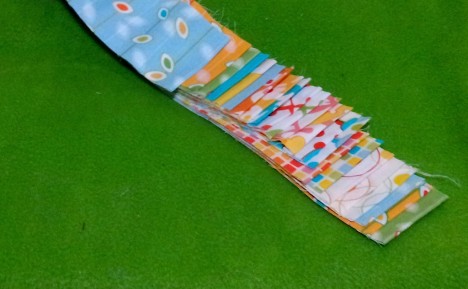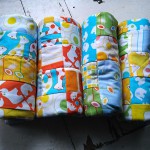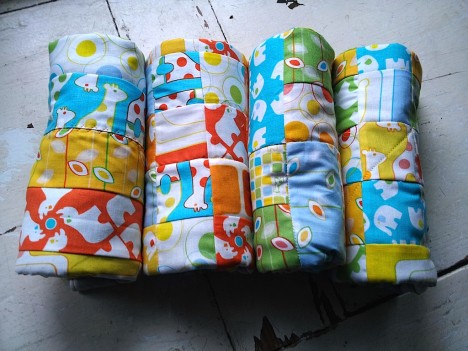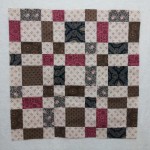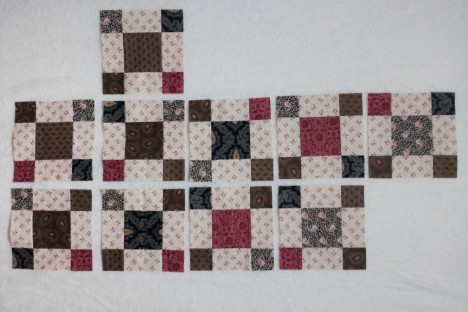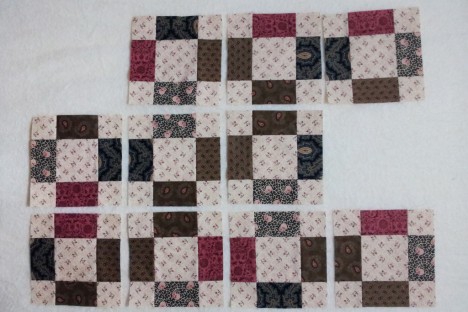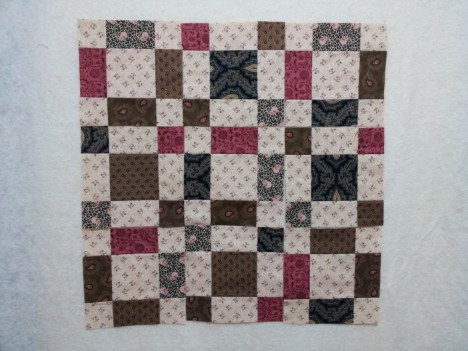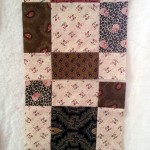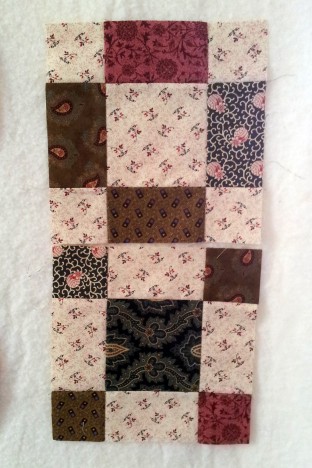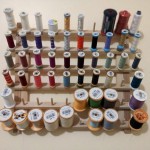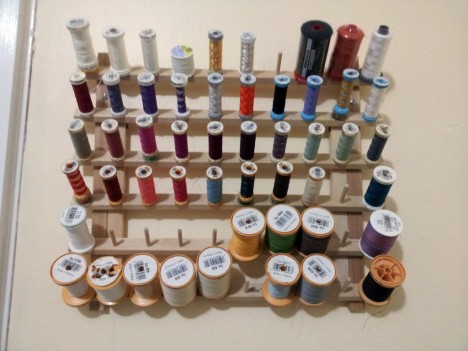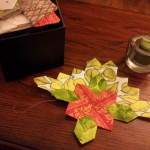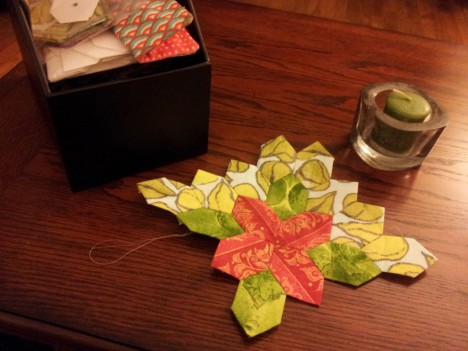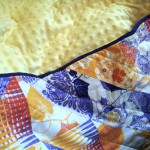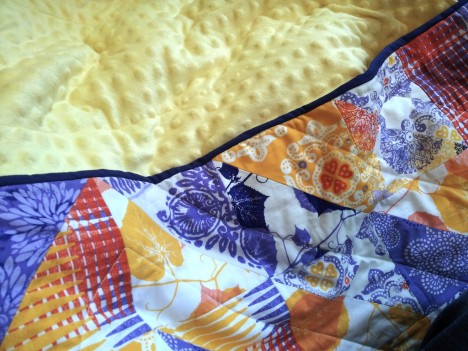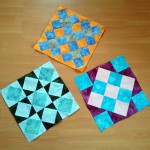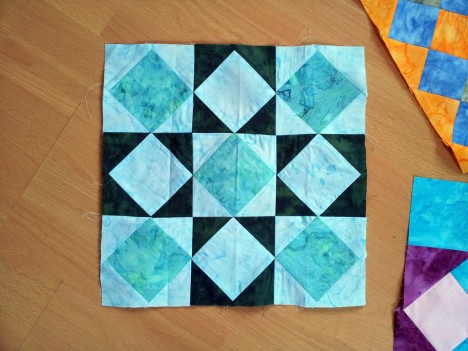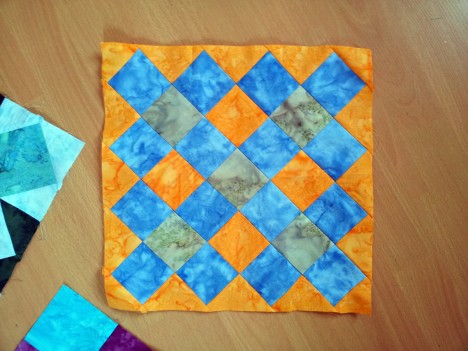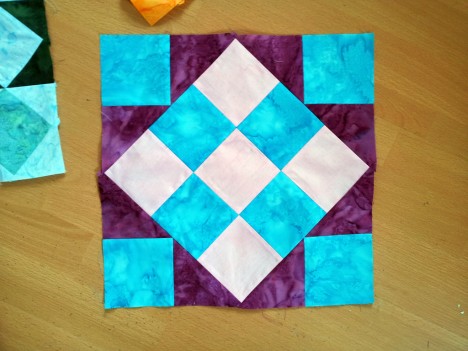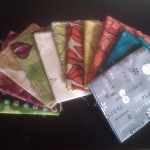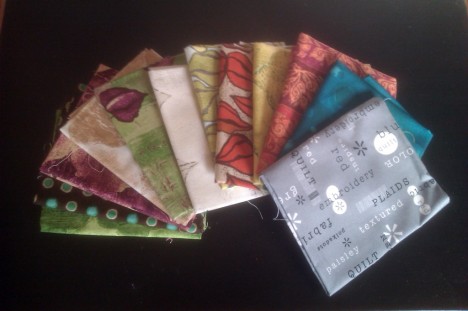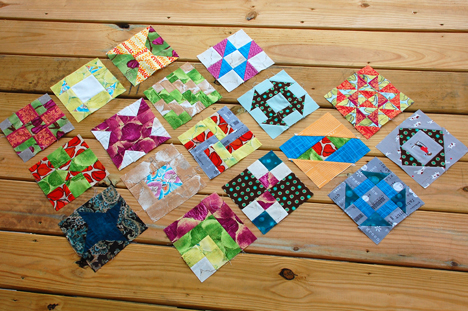1+1=4: Piecing Setup
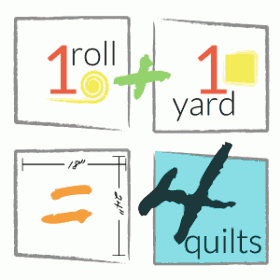 The premise of this week is simple: I’ll show you how to make four small cuddle quilts out of a single roll of 2.5″ strips and a yard of cuddle fabric or fleece. The final quilts measure 18″×24″, so these are meant for comfort more than sleeping under. Today, we’ll start piecing. If you’re just joining in, you may want to hop over to all posts tagged 1+1=4 or start from the beginning of the series.
The premise of this week is simple: I’ll show you how to make four small cuddle quilts out of a single roll of 2.5″ strips and a yard of cuddle fabric or fleece. The final quilts measure 18″×24″, so these are meant for comfort more than sleeping under. Today, we’ll start piecing. If you’re just joining in, you may want to hop over to all posts tagged 1+1=4 or start from the beginning of the series.
All four quilt tops are easily constructed by strip-piecing. If you’re unfamiliar with it, strip piecing speeds up the proces of piecing blocks by allowing you to sew larger strips together, and then cut chunks off the pieced rectangles, giving you larger building blocks with which to create your individual blocks (this surely beats sewing tons of 2.5″ squares together, if you ask me).
So, today: sew eight strip sets of three strips each.

For those of you who are fine with scrappy and arbitrary: just divide your strips into sets of three, caring only to make sure that no strip “reads” the same as one touching it (most generally, that means don’t sew a strip of one color to another of the same color, but you can also keep individual prints separate, etc).
If you want a little more structure, you can coordinate your strip sets to some degree. The easiest way to do this is to divide your strips in half by grouping them in lights and darks, then creating two strip set types: one type with two dark strips sandwiching a light strip in the middle (dark-dominant), and one type with two light strips sandwiching a dark strip in the middle (light-dominant). In my examples, my “lights” are actually the multi-directional animal prints, and the “darks” are all the other prints. Be creative, and see what happens!
If you want to go even further—perhaps separating out color ways—you can create your strip sets in the groups that comprise each top.
Group one*: four coordinating strip sets—two light-dominant and two dark-dominant—that will make Top One & Top Three.
Group two: two coordinating strip sets that will make Top Two. There’s no need for particular attention to value dominance.
Group three: two coordinating strip sets—a light– and dark-dominant—that will make Top Four.
* I will give alternate instructions in case someone wants to make multiple copies of a top instead of one of the others, which requires altering the cutting instructions. In that case, you don’t need four coordinating strip sets and can make four groups of two sets instead.
Finally, trim the selvages off of one side of each strip set. Be extremely judicious—you will need as much of your fabric as possible, so cut as close to the edge of the selvage as you can. Leave the other selvages on for now.
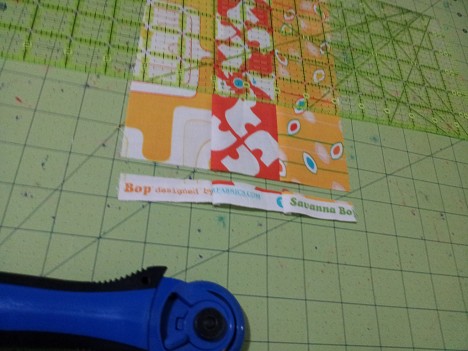
While working on the tops this week, be very careful when cutting. There is very little waste . In fact: here is all the waste I have from the four tops:
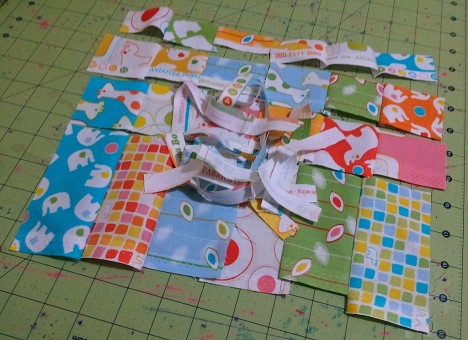
Tomorrow, we’ll piece top one!
This post is part of a series on making small cuddle quilts for charity. My finished quilts will be donations to the 2012/13 service project being sponsored by the Quilter’s Consortium of New York State. If you’re in a NY quilt guild that is a member of QCNYS, contact your consortium rep to learn how to donate (and tell your guild or club about this series!). If you are not a member of a participating guild, but would still like to donate send me an email and we can figure out how to get the quilts to the right place.
